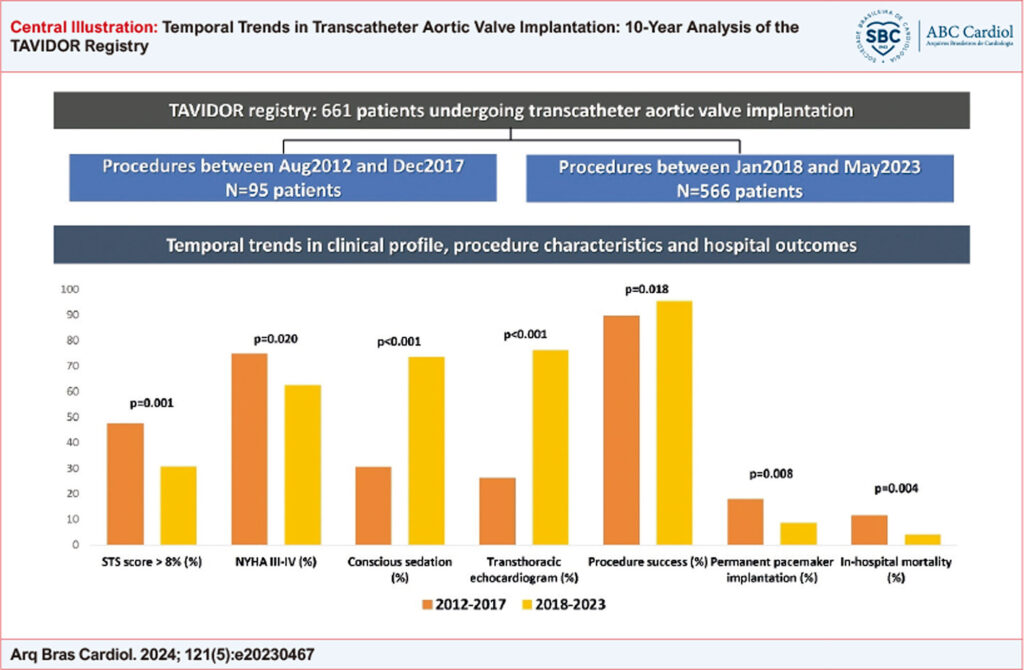Arq. Bras. Cardiol. 2024; 121(5): e20230467
Temporal Trends in Transcatheter Aortic Valve Implantation: 10-Year Analysis of the TAVIDOR Registry
Abstract
Background
Transcatheter aortic valve implantation (TAVI) has established itself as the preferential strategy to approach severe aortic stenosis. Information on procedural improvements and nationwide results obtained with the technique throughout the past decade are unknown.
Objectives
To assess the temporal variation of the demographic profile, procedural characteristics, and in-hospital outcomes of patients undergoing TAVI procedures at the Rede D’Or São Luiz.
Methods
Observational registry comprising 29 national institutions, comparing the characteristics of the TAVI procedures performed from 2012 to 2017 (Group 1) to those performed from 2018 to 2023 (Group 2). The statistical significance level adopted was p < 0.05.
Results
This study assessed 661 patients, 95 in Group 1 and 566 in Group 2, with a mean age of 81.1 years. Group 1 patients had a higher prevalence of New York Heart Association functional class III or IV and STS risk score > 8%. In addition, they more often underwent general anesthesia, transesophageal echocardiographic monitoring, and access through femoral dissection. Group 2 patients had a higher success rate of the TAVI procedure (95.4% versus 89.5%; p = 0.018), lower mortality (3.9% versus 11.6%; p = 0.004), and less often needed permanent pacemaker implantation (8.5% versus 17.9%; p = 0.008).
Conclusions
The 10-year temporal trends analysis of the TAVIDOR Registry shows a reduction in patients’ clinical complexity over time. Furthermore, the advance to minimalistic implantation techniques, added to the technological evolution of the devices, may have contributed to the favorable outcomes observed among those whose implantation occurred in the last 5 years studied.
818

